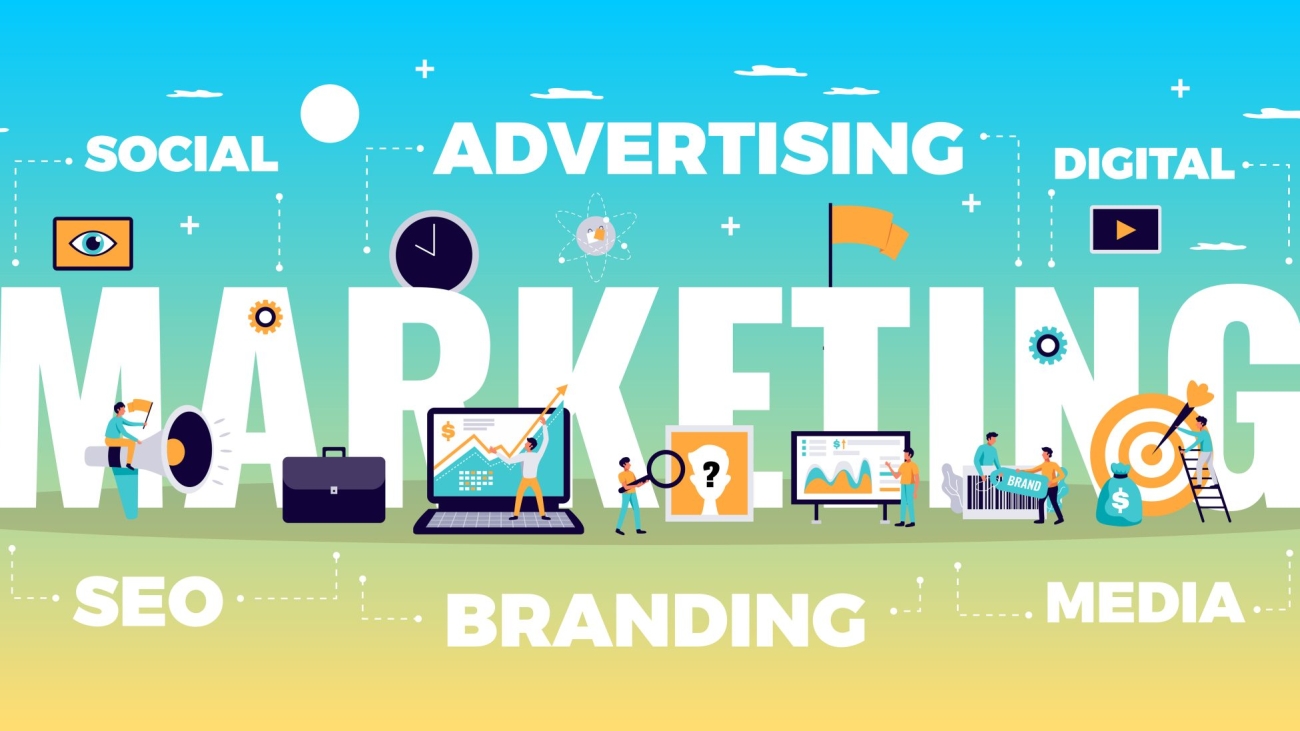Unlocking the Digital Frontier
Being end users of the internet, we have access to immeasurable
information. We spent a lot of time on search queries, and finding the readily
available information of our use. As a matter of fact, Google has become
synonymous with the internet. The internet is pretty much about understanding
user behaviour, internet search trends, and how a website can be optimized to
make full use of resources. According to Hub
spot Academy, 68% of online experiences begin with search engines. 53% of
all website traffic comes through organic search. 93% of traffic comes from
Google search, Google images, and Google maps. According to Orelo, Google is
the most visited website. Google, however, dominates the search engine market. In
addition to that, Google, apart from being merely a search engine, provides
several other services i.e. Google news, Google shopping, and, serving as a
video and images platform as well. Google has maintained its market share over
several years and has earned a lot of revenue through its advertisements. Over
time, Google has developed AI tools to use, one of which is Google Lens,
launched in 2017. This is an app backed by machine learning and artificial
intelligence. In addition to that, as long as search facts and figures are
concerned, Google mobile search remains on top as well. As per another fact,
84% of users use Google three times a day or more Moz.
While discussing search mechanisms by users, a thing which can’t be ignored is
Search Engine Result Pages (SERP). As
per statistics, only 0.63% of people go on the second page if they do not find
their intended results on the very first page of Google search results. The
general tendency is to switch the search query if the required results are not
found. The incrementors have listed
some of the burning digital facts, one of which is that 49% of businesses said
that they have earned the best ROI through digital marketing or social media
marketing. It is commonly observed in the UK and US that successful brands
spend 21% of their revenues on digital marketing. There are several digital
marketing agencies providing the services. Yral
is one of the team leaders. The importance of content marketing cannot be
undermined here, because people have a high tendency to buy a certain product
or service after reading blogs on it, or if they see visuals from it. Let us
start from the basics of how the internet started and how the advent of other
relevant things happened accordingly.
The Web’s Evolution Unveiled
According to Hubspot, a good example of the evolution of the
internet would be considering the internet as a city. And there are towns in the
city. In a town there are houses, and each house can be considered as a
website. Each room inside the house is a different web page and hallways and
stairs connecting different rooms are taken as internal links between the
site’s pages. Each street contains different houses, which means lots of
different websites. The growth of houses can be taken as a lot of different
websites. Hence, the growth of houses is equal to the growth of the internet
and that results in a town expanding into the city. Roads that connect these
houses are external links. And, if there are some landmark buildings on those
roads or highways, we can use them as big popular websites. As it happens in
general terms, if the building’s address is known, then one can drive straight
to it just like typing a Website’s URL. Contrary, if the building’s address is
not known one has to go to the town directory. Further details would be
required like the colour of the building, how many stories it has, and the
direction of its exact location. All of this would be seen as an alternative to
the search performed on any search engine. This example is an urge for a layman
or less tech savvy person to understand that how websites relate to one
another, and, the role search engines play in the use of internet.
However, in technical terms, roots of internet are way backed from
the military concept of “decentralization”, which means bringing all the useful
information to a central point that can be easily accessed by end users.
Nevertheless, in 1973 the U.S. Defense Advanced Research Projects Agency
(DARPA) initiated a project on distributed network which was kind of
communication with the use of protocols. And these protocols themselves formed
a shared language, enabling computers to understand each other clearly and
easily. That’s where centralization of information started, which eventually
led to the decentralisation of information on the internet and gave birth to
network information systems as well. The initial era of internet roots back in
early 1960’s. Computers in those early 60’s were quite large and immobile.
Pioneering the Digital Landscape in the Wake of Internet Evolution
The above-mentioned example is merely the simplest glimpse about how
internet functions, whereas the internet in real life is way more complex. When
the era of internet started, websites were clumsy. I.e. a website was only
accessible by manually typing the address, or by clicking a link from another
website. Gradually, with the growth of the internet, a lot of websites came into
existence and there came a need for search engines to help users to navigate
the web and find what they needed more easily.
Some of the initial search engines from the 1970’s till the early 1990’s
were “Archie”, “Gopher”, “Web Crawler”, and, “Prodigy”. However, in the early
1990’s, the engines which showed up in those days of the internet, were
“Yahoo”, “Google”, and “Bing”. “Ask,com”, “Alta Vista” were others which were
commonly recognized. However, Google defeated all of them, since it did a much
better job than its rivals and made search easy and comprehensive like never
before for the ultimate users. The key success factor for Google even back then
was “Page Rank”. This made Google relate the relevance of webpages which were
asked in queries. Google search and PageRank till date. Google has this lead
over other search engines till date that no other search engine could beat it
since last 10 years. These days, Google has the biggest market share with the
lead, followed by Yahoo and Bing, and Ask standing the least with 64%, 23%, and
12% of shares respectively Hewlett
Packard.
Empowering Users through Smarter Algorithms and Unparalleled Digital
Experiences
The major aim for any search engine happens to be providing the best
suitable match for a user’s search query. All search engines that came into
existence are user-centric. Their ultimate aim is to facilitate the query as
best as possible that has showed up from the user’s end. With the passage of time,
search engines have revised and updated their search algorithms continuously to
provide the best user experience. Algorithms basic job is to produce the final
results we see on SERP’s. Google for example have “Panda”, and “Penguin”
algorithms that work for filtering, penalizing, and, rewarding content based on
its characteristics, and, to judge links and address any spams found there.
Each search engine has its own algorithms. With the new and competitive
algorithms there came different tools to stay competitive. SEO is most
prominent of them. Since, Google is widely used search engine, let us see how
Google algorithms work.
Unravelling How Google Ranks Your Content for Online Success
Search Engine Journal
gives an analogy that Google sees each word as a unique entity, and it
classifies them to compose a repository of these entities. These
classifications help Google to judge your website. That’s exactly how Google
identifies the interconnectivity between websites and the world at large.
Search engines are pretty much accountable for ranking all of the websites and
not only one. The moment a user types a query, search engines start to go
through a lot of preparatory work. And this preparatory work consists of three
stages. 1) Crawling; 2) Indexing; 3) Ranking, and, all these three stages are
highly aligned with discovering, organizing, and ranking. The moment a user
types a search query, search the engine starts to discover the information
about that particular query which happens during crawling. However, the data
gathered from the “crawling” process would be raw and not in position to
be published. That leads to the process of “indexing”, which is basically
classifying the information in a presentable form gathered through a crawling
process. The final stage is “ranking”, which happens when a search engine goes
through the process of ordering search results from most relevant to least
relevant to a particular query. All this is done through algorithms which are
basically a set of processes and formulas through which stored information is
extracted and organized in a meaningful way. These algorithms are updated
continuously to improve the quality of search results.
How Search Engine Evolution Catalysed the Rise of Strategic Online
Marketing”
Knowing the functionality of search engines, there comes the need
for tools that can help certain webpages to rank higher. Search Engine
Marketing is one of them. It is basically used to bring our product at the top of
the search list whenever buyers or users are looking for that particular
product which we are offering. In short, it is used to bring visibility to the
products that we have to offer. Since traditional ways of advertising were too
costly, although they had their own perks, SEM advertises a product in a much
more effective and economical way. Search Engine Optimization (SEO) basically
acts as a component of Search Engine Marketing (SEM). SEM uses paid promotion
methods that aim to make a particular company rule over the Search Engine
Results Page (SERP) as a response to a particular asked query. Pay per Click
(PPP), Pay per Impression (PPI), and, Paid aid Display Marketing are few of the
methods opted in SEM. On the other hand, the organic way of online marketing/smm
marketing is Search Engine Optimization. Although. SEM and SEO serve the same
purpose, yet, the functionality of both is different. SEM is usually opted for
by businesses if they need quick access to the target audience, whereas SEO is
utilised when things are to grow slowly and in an organic way. However, the
amalgamation of both techniques has the capacity to bring drastic results. SEO
can lend a big hand to SEM itself, conditional that both techniques are opted
strategically and the experts of both work on the same page, rather than
functioning individually. Since the ultimate target for any company is to
increase their revenue, thus SEO and SEM can be strategized in a way that it
becomes helpful for the cause and become the trigger for the overall marketing
drive.










